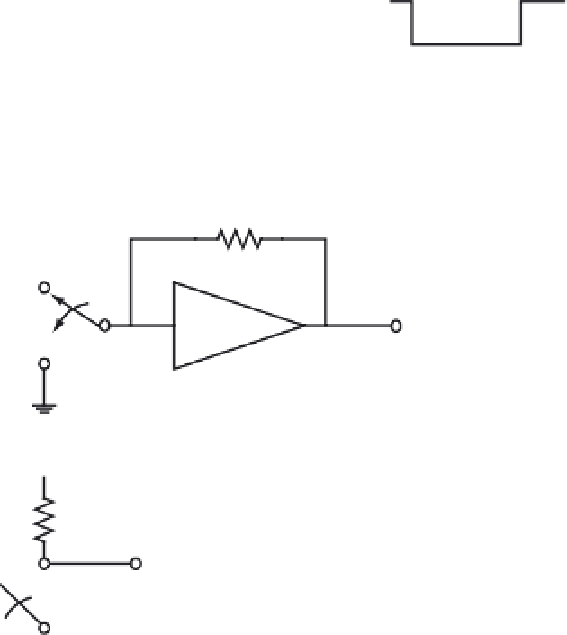Hardware Reference
In-Depth Information
Contact bounce is due to the dynamics of a closing contact. The signal falls and rises a few
times within a period of about 5 ms as a contact bounces. Since a human being cannot press and
release a switch in less than 20 ms, a debouncer will recognize that the switch is closed after
the voltage is low for about 10 ms and will recognize that the switch is open after the voltage is
high for about 10 ms.
Both hardware and software solutions to the key bounce problem are available. Hardware
solutions to contact bounce include an analog circuit that uses a resistor and a capacitor to
smooth the voltage and two digital solutions that use set-reset latches or CMOS buffers and
double-throw switches. Dedicated scanner chips that perform keypad scanning and debouncing
are also available. National Semiconductor 74C922 and 74C923 are two examples.
H
ARDWARE
D
EBOUNCING
T
ECHNIQUES
The following are hardware debouncing techniques:
•
Set-reset latches
.
A key switch can be debounced by using the set-reset latch
shown in Figure 7.33a. Before being pressed, the key is touching the set input and
V
DD
Set
Q
R
Q
Set
Reset
Reset
R
(a) Set-reset latch
V
DD
R
4050
V
out
(b) CMOS gate debouncer
V
DD
R
H
V
out
Threshold level
C
L
Switch closed
(c) Integrating RC circuit debouncer
Figure 7.33
■
Hardware debouncing techniques





Search WWH ::

Custom Search